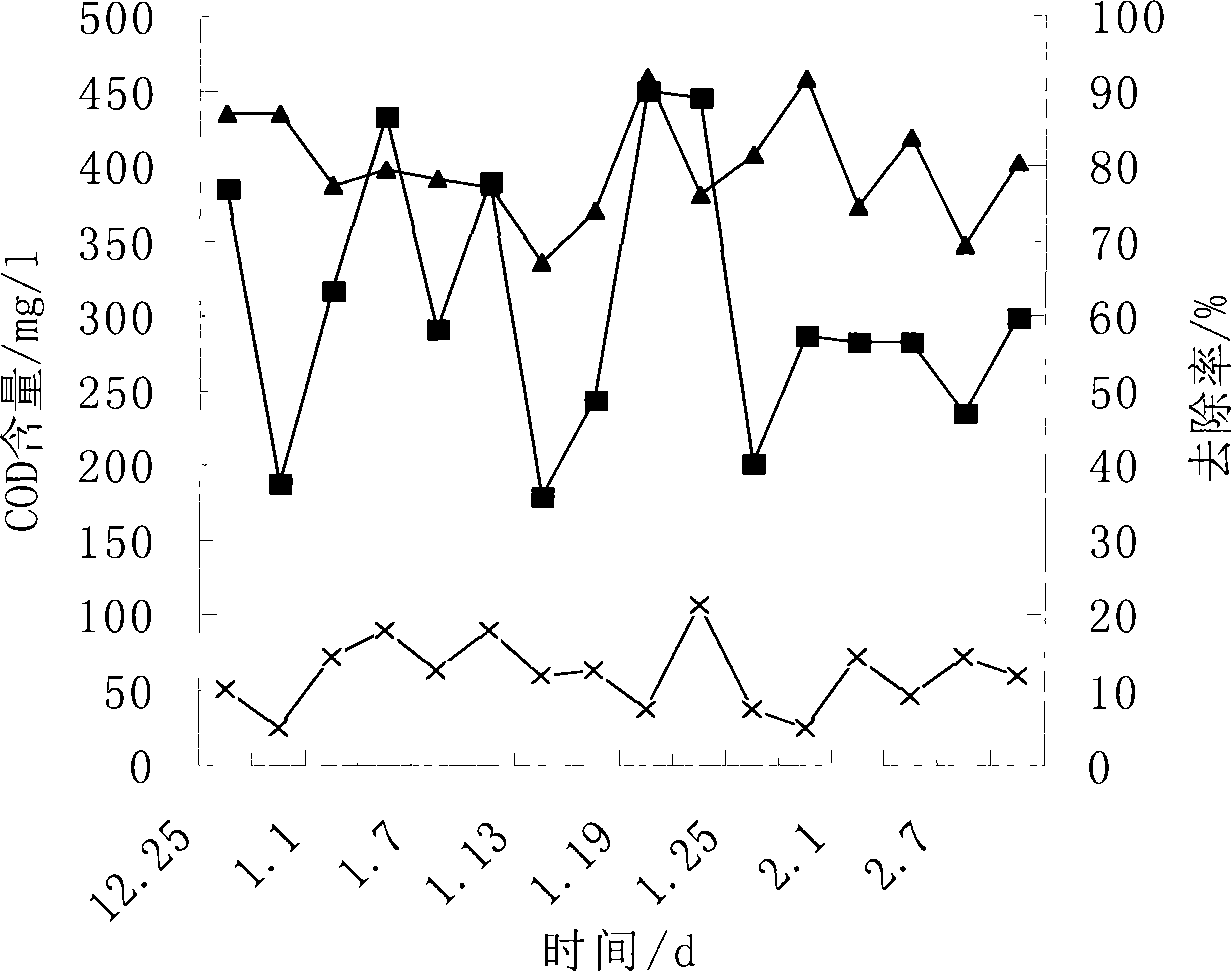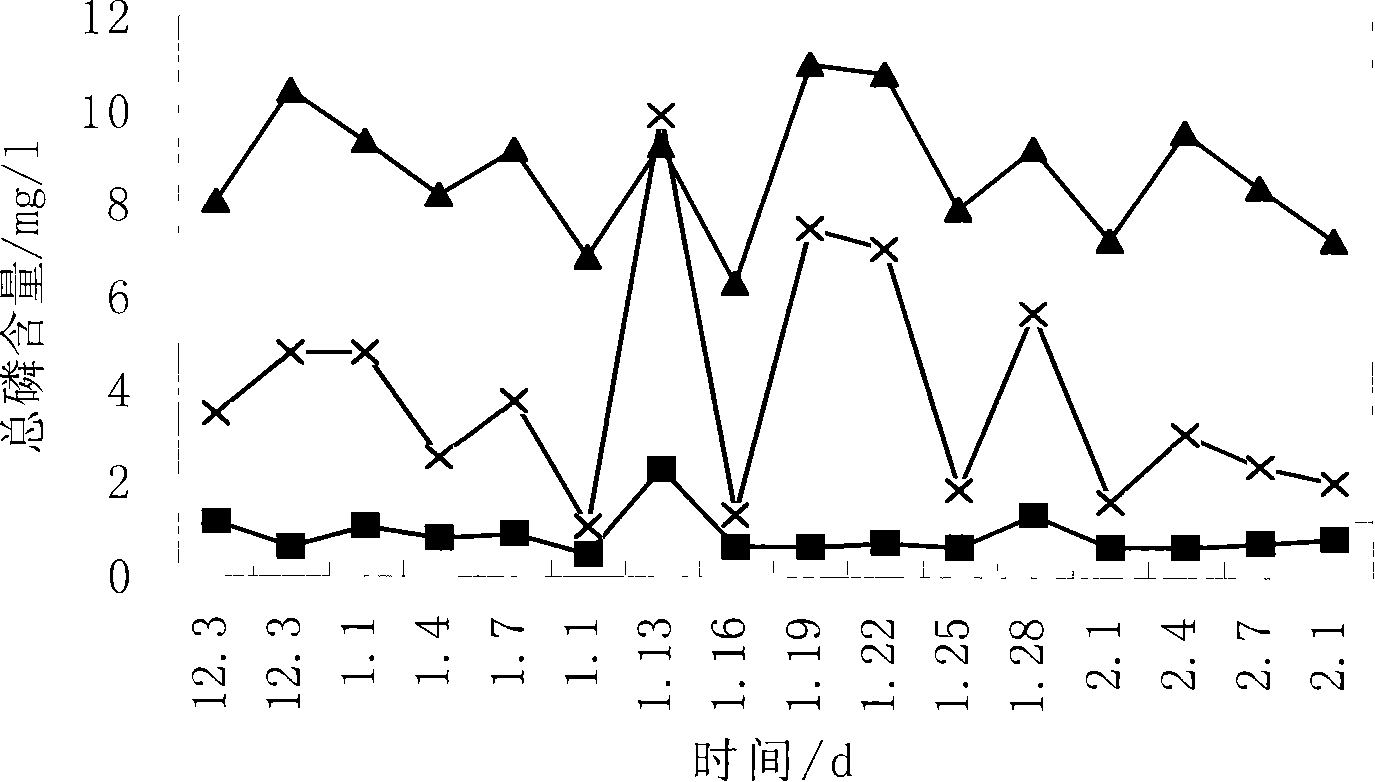Method for low-temperature denitrification and phosphorous removal
A denitrification and phosphorus removal, low temperature technology, applied in the direction of aerobic and anaerobic process treatment fixed on/in organic carrier, can solve the problem of difficult to achieve simultaneous denitrification and phosphorus removal, achieve sufficient carbon source, Beneficial for denitrification
- Summary
- Abstract
- Description
- Claims
- Application Information
AI Technical Summary
Problems solved by technology
Method used
Image
Examples
specific Embodiment approach 1
[0022] Specific implementation mode one: as figure 1As shown, the treatment system adopted in the low-temperature denitrification and phosphorus removal method of this embodiment consists of anoxic pond 1, anaerobic pond 2, aerobic pond 3, first sedimentation pond 4, contact oxidation pond 5 and second sedimentation pond 6 consists of six structures. The treatment method is: 1. Cultivation and fixation of low temperature resistant denitrifying bacteria and nitrifying bacteria: the anoxic tank 1 uses fillers to fix the denitrifying bacteria on the polyurethane foam filler through the natural hanging film, and the contact oxidation tank 5 uses the immobilization method to fix the denitrifying bacteria on the polyurethane foam filler. The nitrifying bacteria are fixed on the polyurethane foam filler, the specific process is as follows: under the condition of 4 ~ 10 ℃, put the activated sludge into the polyurethane foam container, aerate, aerobic culture; after one week of cultiv...
specific Embodiment approach 2
[0033] Specific embodiment two: in the present embodiment, the process that the nitrifying bacteria isolated in step 2 is fixed on the polyurethane carrier by enrichment culture is as follows: (1) under the condition of 4 DEG C, the nitrifying bacteria are enriched and cultivated, when the MPN counts, the concentration reach 10 5 cells / ml, the enrichment culture is considered successful; take out the cultured strain culture solution and centrifuge at n=4000 rpm for 15 min, discard the supernatant, wash the precipitate twice with phosphate buffer solution, and wash three times with normal saline Centrifuge again, discard the supernatant; add distilled water to the wet bacteria to prepare a suspension of psychrotrophic bacteria, and the OD of the psychrotrophic suspension is 585 About 1.854; (two) use Na 2 CO 3 Regulating saturated boric acid pH value is 6.7, and polyvinyl alcohol is dissolved in 100 ℃ of water baths and is cooled to 30 ℃; (3) the nitrifying bacteria suspensio...
specific Embodiment approach 3
[0034] Embodiment 3: In this embodiment, the side length of the polyurethane foam is 1.5-3.0 mm, the bulk density is 0.06 kg / L, and the bulk volume is 500 ml. Others are the same as in the second embodiment.
PUM
| Property | Measurement | Unit |
|---|---|---|
| length | aaaaa | aaaaa |
| clearance rate | aaaaa | aaaaa |
Abstract
Description
Claims
Application Information
 Login to View More
Login to View More - R&D
- Intellectual Property
- Life Sciences
- Materials
- Tech Scout
- Unparalleled Data Quality
- Higher Quality Content
- 60% Fewer Hallucinations
Browse by: Latest US Patents, China's latest patents, Technical Efficacy Thesaurus, Application Domain, Technology Topic, Popular Technical Reports.
© 2025 PatSnap. All rights reserved.Legal|Privacy policy|Modern Slavery Act Transparency Statement|Sitemap|About US| Contact US: help@patsnap.com



